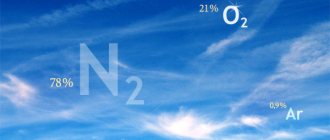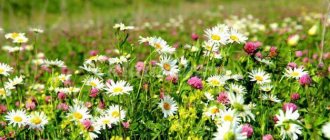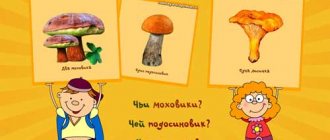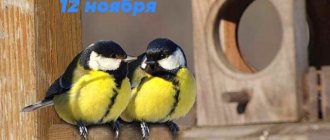Founding of the capital
Moscow is a huge, beautiful city with a special atmosphere, a unique past and centuries-old traditions. Every day a large number of people from different cities and countries come to it to study and work, as well as to see the sights.
Today Moscow is the capital of Russia. It was first mentioned in 1147 as the village of Moscow. According to ancient chronicles, Grand Duke Yuri Dolgoruky ordered the small settlement, which was located on a hill where two rivers - the Moscow River and Neglinka - merged, to be surrounded by a high wooden wall (city). He surrounded the wall with a deep ditch and nicknamed this place Moscow City.
The founding of the city had a positive effect on the inhabitants. It was very conveniently located, since major trade routes passed through it. This contributed to the further growth and development of Moscow.
By decision of Prince Ivan Kalita, Moscow became the capital of Rus' in 1328. By this time, the city's territory had become larger and the population had increased significantly.
Prince Dmitry Donskoy ordered the demolition of the old wooden walls and erected new ones made of white stone instead. From that moment on, Moscow began to be called White Stone.
Cultural development of Moscow
Moscow had the status of capital until 1712, after which Peter I assigned it to St. Petersburg. It was returned only after 1917. But during this time Moscow continued to develop in all directions. Moscow State University (MSU) was opened with the direct participation of the great scientist M.V. Lomonosov. Two gymnasiums appeared - one for the children of the nobility, and the second for the children of commoners and merchants.
The War of 1812 brought great grief to the residents of Moscow, when the city was completely destroyed by fire. However, after the victory of the Russian army over Napoleon's army, it was restored. Thus, Moscow again became a cultural and economic center.
Today, part of the ancient city is located in the very center of the capital. It includes historical buildings, estates and other objects. On the territory of the Kremlin there are religious buildings that are known all over the world: the Arkhangelsk, Annunciation and Assumption Cathedrals.
There are more than 60 theaters, about 100 museums, 75 higher educational institutions, and galleries in the metropolis. More than 4,000 libraries operate for Muscovites and guests of the capital, including the famous “Leninka” (Lenin Library).
The Moscow transport system is unique, which includes railway stations, airports, public transport, and the metro. Some metro stations are architectural monuments. The metro continues to develop and opens new stations for passengers every year.
The Moscow government is doing everything possible to ensure a comfortable stay for Muscovites and guests of the capital. The infrastructure is developing and the city is becoming more modern and practical.
Attractions
Moscow is a huge city and it is impossible to see all the sights in one day. There are a large number of beautiful and significant places in the capital: ancient monuments, museums, parks and beautiful places:
- The main attraction of the capital is Red Square and the Kremlin. The territory of the Moscow Kremlin is surrounded by a high red brick wall and towers. On the largest tower, which is called Spasskaya, there is a clock. Inside there are churches, museums, monuments, as well as buildings where the Russian President and government work. Here is the Tsar Bell and the Tsar Cannon. They have this name because of their huge size.
- An equally significant attraction is the Alexander Garden. It is located next to the Kremlin. This is a very beautiful park, divided into 3 zones. The park has cozy alleys, beautiful lighting and benches for relaxation. Its construction began during the restoration of Moscow after the fire.
- VDNH is a huge exhibition complex. Every tourist who comes to Moscow visits it. There are museums, exhibitions, and various exhibition pavilions on the territory. Cultural and entertainment events are regularly held there. People come here to visit Europe's largest aquarium and center for the study of seas and oceans.
- The Ostankino TV tower has 45 floors. Excursions to it are conducted by experienced guides who tell interesting facts about the history of the creation of this attraction. Inside you can buy drinks and look at Moscow from above. Tourists from all over the world flock here every year.
- The history of the largest department store (GUM) began in the 18th century. At that time, shopping centers opened on Red Square on the site of modern GUM. In Soviet times, this store was considered the most important in the country. Today, famous world brands present their products in GUM.
- Arbat is the central city street. It is she who conveys the entire unique atmosphere of the city. People walk along it, street musicians play instruments and sing, and artists present their work to the public. Many famous people of our country once lived and worked here.
There are many observation platforms in the capital. You need to visit at least one to see Moscow from a bird's eye view. The most popular is Vorobyovy Gory. It is located next to Moscow State University. A visit to this site leaves an indelible impression of viewing the beauty of the city.
Implementation of the program content in educational areas: “Cognitive development”; “Speech development.”
Types of children's activities: Cognitive and research, perception of fiction, communicative.
Goals: expand ideas about the capital of our Motherland - Moscow; introduce them to its sights, teach them to talk about what they learned and saw, and cultivate love for their native land and country.
Target guidelines for preschool education: knows and names the capital of Russia and the region, can tell about the sights of Moscow.
Progress of the lesson
Educator: What is the name of the country in which we live? What language do you and I speak? What is a country?
Children: “These are forests, seas, rivers, mountains, villages, cities...”
Educator: This is the place where we live, where your parents, grandparents, your acquaintances and friends lived. We call Russia our Motherland because we were born and raised. Everything here is dear to us. You and I have a small Motherland - your family, our kindergarten and our city - Bogotol. (The child recites a poem about the Motherland or family.)
Russia is a huge country and many people live in it. In order for there to be peace and order in the country, fair laws are needed that all people of the country would obey. The basic law of our state is the Constitution. The Constitution protects the rights of citizens and young citizens.
Every state has a main city - the capital. The capital of our Motherland is Moscow (I show it on the screen), and the capital of our Krasnoyarsk Territory is the city of Krasnoyarsk (I show it on the screen).
Educator: The main government institutions are located in Moscow - the parliament, where there is a State Duma and the Federation Council (I show the corresponding pictures on the screen), our president and the government of our country work in the Kremlin (ministers are assistants to the president, I show pictures).
The president is the head of state elected by the people. He and the government lead the country, decide important state issues, and approve laws.
Educator: Who knows the name of our president? (Children's answers.)
Educator: Moscow is the largest city in Russia. More than 8 million people live here. Now we will take an excursion to an exhibition of paintings in Moscow. It’s called “I’m Walking Around Moscow.”
Showing a picture (Moscow River and the Kremlin) Pay attention to the battlements and towers, they are made of red brick. One of the towers is Spasskaya, where the largest clock is located. We use them to check our time. There are many educational institutions in Moscow: universities, institutes, academies, where students from all over the world study and use the services of the central library (I show a picture of the central library).
I turn on the song “I am walking around Moscow” and do several exercises with the children (physical minute).
Educator: There are many churches in Moscow: the Annunciation Cathedral, the Archangel Cathedral, the Cathedral of Christ the Savior (I show the corresponding images on the screen).
There are many theaters in Moscow: the Academic Bolshoi Theater, the Maly Theater, and the Sergei Obraztsov Puppet Theater. There are also many squares (I show the corresponding images on the screen). There are also monuments to famous people who lived in this city: Pushkin, Mayakovsky, Tchaikovsky. There are many other attractions here: the Tsar Cannon, the fountain (I show the corresponding images on the screen).
Educator: There are many songs and poems about Moscow. Our children have prepared poems and sayings about Moscow (we listen to the children).
The history of Moscow, its centuries-old traditions, are reflected in the coat of arms of Moscow (I show the coat of arms), the flag, the anthem (I tell you what the flag is and what it means, and the anthem). If you have time left, you can draw the Russian flag.
Reflection: What new did you learn in class today? What did you like? (Children answer.)



